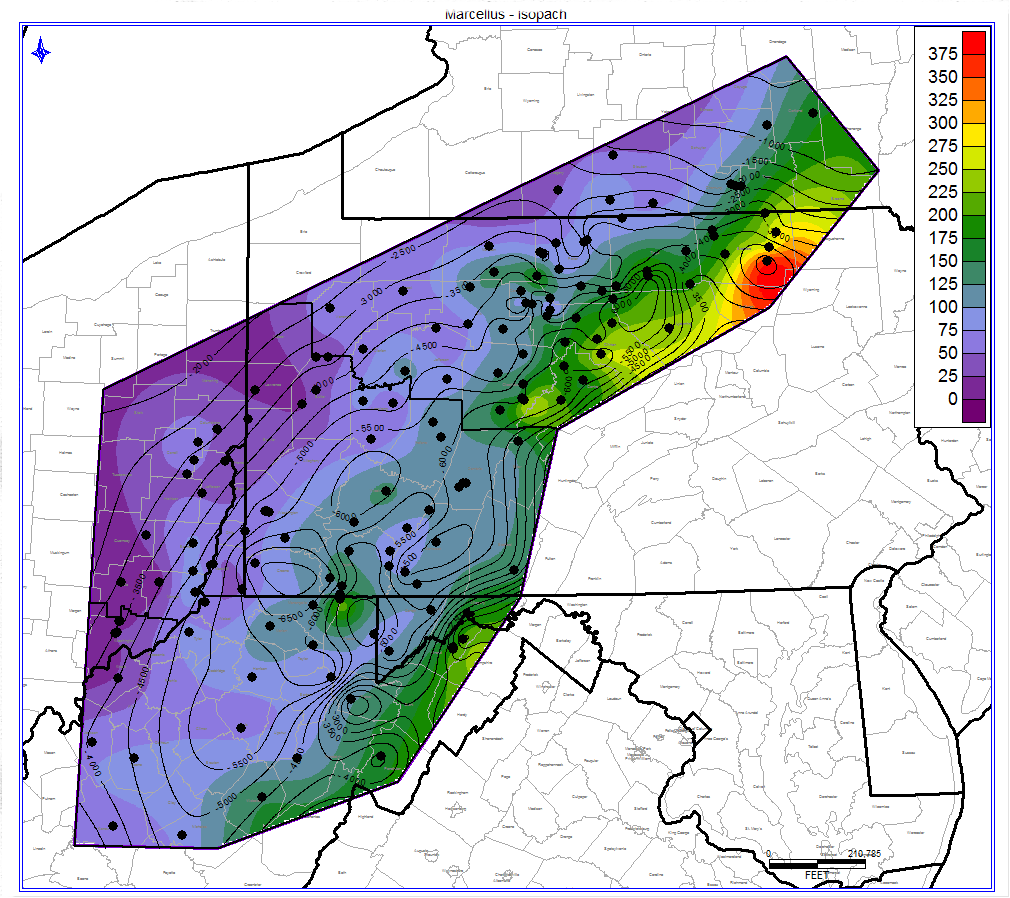Marcellus Regional Shale Study
A petrophysical and geological analysis of 146 wells
An organic rich source rock from which hydrocarbons were generated.
This study of 146 wells provides insight into the connectivity of textural attributes.

The Marcellus Formation was deposited during the Middle Devonian Period about 390 million years ago in the Appalachian Basin of Eastern North America. The Appalachian Basin was formed as the result of the collision of Avalonia with Laurentia (pre-historic North America). This collision marked the onset of the Acadian orogeny and the formation of the northern Appalachians.
This mountain building event caused the Appalachian Basin to subside and fill with sediment. Erosion of the newly formed mountains slowly deposited sediments in this deep water, low-energy, poorly-oxygenated environment and resulted in an organic rich source rock from which hydrocarbons were generated.
This Marcellus study provides a petrophysical and geological analysis of 143 Marcellus wells that allows insight into the connectivity of textural attributes of the wells with NULOOK Shale Vision and NUVIEW 3D Reservoir Vision. Also available to coincide with the study is a GeoTextural rock properties log that depicts the brittleness of the formation.

purchase the full study or request your own
- 4101 Interwood N Pkwy, Suite 250 Houston, TX 77032
- info@nutechenergy.com
- 281.812.4030
- 1.866.688.3241
deliverables
Reservoir potential evaluation
NULOOK® Shale Analysis
- 146 wells
NUSTIM® Geomechanical Analysis
- 146 wells
NUVIEW® 3D Attribute Mapping
- Stratigraphic Cross Sections
- Stratigraphic Cross Sections
- 3D Petrophysical Property Distribution Model
- Composite Stratigraphic Image Maps
- Reports

